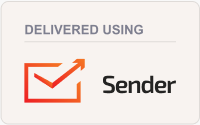Can you bee-leaf it’s spring?
The warm, spring weather has us all wanting to spend more time outdoors. Many people enjoy gardening and are itching to get out in the garden!
At this time of year, one of the best things you can do in your garden is… nothing!
You will have plenty of time to get into the garden all season.
Over the winter, pollinators will shelter in the stalks, fallen leaves and debris in your garden. Yes! Your 'yard waste' is critical pollinator habitat! Eggs and other dormant insects will also benefit from leaving your garden untouched until temperatures warm.
When should you mow your lawn?
Wait until daytime temperatures are regularly over about 10-15oC for a week before you start clearing your yard or garden. Many native bees and beneficial insects are found in hollow stems and under leaves, and take time to emerge.
In this spirit, ‘No Mow May’ is an initiative that encourages residents not to mow their lawns in May to provide pollinators with a food source early in the season.
There can be a bit of controversy because Ontario’s native pollinators don’t benefit as much from No Mow May. This is because the first plants to pop up in our lawns are often dandelions, which aren’t an excellent food source for native pollinators. But less than ideal food is better than no food at all. Plus, mowing later in the season helps improving your lawn’s root health, which makes it more drought resistant later in the summer.
Want to help pollinators more? Create un-bee-lievable habitat?
Consider removing the grass in your lawn and replacing it with pollinator gardens and other native plants. Our local pollinators and plants have spent thousands of years adapting with each other. Some native willow and popular species will flower early in the season and will be blooming when the first insects emerge. Imagine if you haven’t eaten for months on end, you’d be a bit peckish too!
Pollinator gardens can be lower maintenance and provide a vibrant, active garden throughout the season. Native species will thrive in local conditions and support not only pollinators, but also birds and other wildlife.
Not sure where to start? NVCA’s Green Pages is a great resource for creating a native plant garden.
